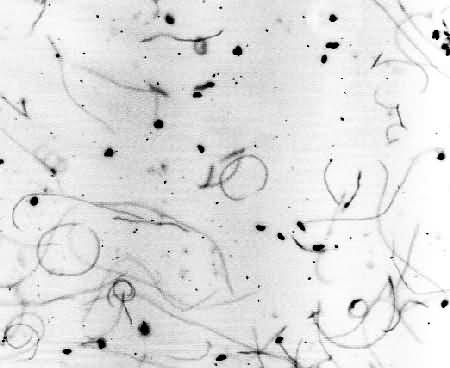
Tracks of bacteria with a polar flagellum.
Negative of a digital darkfield exposure, observation time 1 sec.
|
After swimming ahead for some time, bacteria change the rotational direction of their flagella. If they possess several flagella distributed over the surface (peritrichous flagellation) this causes stop and tumbling for a short period. Bacteria with only one
polar flagellum as in our example, swim backward when the rotation is switched. One can see that the bacteria swim backward slower than forward. The short branches of the tracks are thicker, as during a backward motion.
Bacteria swim about 50 µm per second. Extrapolated to the size of a man this would be 360 km/h or 195 mph.
|
 How bacteria swim
How bacteria swim
 How bacteria swim
How bacteria swim